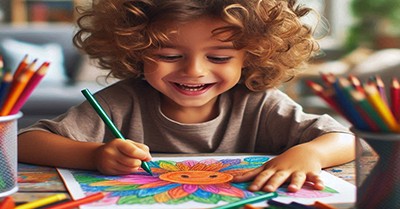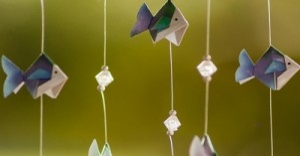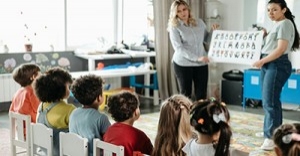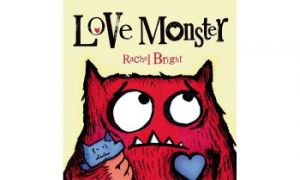There is often a debate on whether colouring pages should be used in early childhood services. Do they limit creativity? Or foster creativity? Do they restrict children from thinking freely? Or can it they be used as inspiration? The following article provides information on the Pro and Cons Of Colouring Pages, Does Colouring Pages Hinder Creativity, Using Colouring Pages To Complement Open Ended Activities, Colouring Pages and the EYLF and more.
Pro and Cons Of Colouring Pages
Pros
-
Supports Fine Motor Development: Coloring enhances hand-eye coordination and strengthens the small muscles in children’s hands, preparing them for writing.
-
Encourages Focus and Relaxation: It’s a calming activity that helps children concentrate and manage stress.
-
Reinforces Learning: Themed pages can introduce or reinforce concepts like letters, numbers, shapes, animals, and cultural ideas.
-
Fosters Creativity: Children can choose their own colors and patterns, adding their unique touch to each page.
-
Accessible Activity: Coloring pages are easy to organize and require minimal resources, making them a convenient option for educators.
Cons
-
Limits Creative Expression: Pre-drawn designs can restrict children’s imagination compared to free drawing, where they create their own designs.
-
Repetitive and Overused: Overreliance on coloring pages can make activities monotonous and reduce engagement in other hands-on, exploratory learning experiences.
-
Not Always Inclusive: Some pages may lack diversity or cultural relevance, which can alienate children from different backgrounds.
-
Focus on Fine Motor Skills Only: While valuable, coloring primarily targets fine motor skills and doesn’t engage other areas of development, such as gross motor or problem-solving skills.
-
Risk of Comparisons: Children may compare their work to others’, which could impact their confidence if they feel theirs is “not as good.”
Does Colouring Pages Hinder Creativity?
There’s ongoing debate about whether coloring pages hinder creativity, and the answer largely depends on how they are used. Here's a balanced view:
How Coloring Pages Might Hinder Creativity
-
Limited Imagination: Pre-designed templates can restrict children from thinking freely or coming up with their own ideas.
-
Repetitive Use: Over-reliance on coloring pages may discourage open-ended activities like free drawing or other explorative art forms.
-
Standardization: Children might feel compelled to color within the lines or use specific colors, which can discourage experimentation and individuality.
-
Focus Shift: The focus might shift to “completion” rather than the creative process itself.
How Coloring Pages Can Support Creativity
-
A Starting Point: For children who find blank paper intimidating, coloring pages can offer a foundation to build upon, such as adding their own elements or expanding the scene.
-
Inspiration: They can introduce new themes or ideas (e.g., space, animals, or nature), sparking children’s imagination beyond the page.
-
Skill Building for Creative Work: By developing fine motor skills and color awareness through coloring, children can be better prepared for more open-ended artistic endeavors.
-
Contextual Learning: Templates can provide a concrete image to build understanding of new concepts before children try to draw their own interpretations.
Using Colouring Pages To Complement Open Ended Activities
1. Combine Coloring with Storytelling
-
Start with an open-ended storytelling session and let children create scenes related to the story on coloring pages.
-
Encourage them to add their own details to the pages, expanding on the narrative.
- After coloring nature-themed pages (e.g., trees or animals), provide loose parts like sticks, leaves, and pebbles for children to build their own versions of what they colored.
-
This bridges creativity between two mediums—coloring and hands-on play.
3. Stimulate Role-Playing
-
Use coloring pages of community helpers, animals, or fantasy characters, then invite children to role-play as the characters they’ve colored.
-
This helps them connect imagination to active play.
4. Inspire Free Drawing
-
Start with a partially designed coloring page, leaving blank sections for children to draw their own additions.
-
This way, they can transition from structured coloring to freeform creativity.
5. Create Themed Learning Stations
-
Set up a learning station where children color, then explore other activities related to the theme, such as science experiments or sensory play.
-
For example, after coloring pages about ocean life, children can investigate shells or water play.
6. Encourage Group Collaboration
-
Provide a large coloring sheet or mural for the group to work on together, fostering teamwork and sharing.
-
Then, ask children to create stories or art pieces inspired by the group creation.
7. Link to Outdoor Exploration
-
Use coloring pages featuring items they might find outdoors, like flowers or bugs.
-
Afterward, go on a nature walk to spot these elements in real life.
8. Use Coloring Pages for Provocations
-
Present a coloring page with intriguing images and ask open-ended questions like, “What do you think is happening in this picture?” or “What else could be in this scene?”
-
Follow up with free drawing or creative writing based on their ideas.
9. Outdoor Adventure Themes
-
Color and Explore: Provide coloring pages of plants, animals, or insects, then organize a nature walk where children can try to find these elements in real life.
-
Create Nature Art: After coloring, use leaves, sticks, or flowers from outdoors to decorate or expand on their creations.
10. Cultural Exploration
-
Coloring Around the World: Introduce coloring pages featuring cultural symbols, festivals, or traditional attire. Pair this with a hands-on activity, like creating a craft or trying food from the culture.
-
Story Expansion: Share a story or folktale from a culture and encourage children to add to the scenes on their coloring pages.
11. Science and Discovery
-
Themed Experiments: Use a coloring page related to science topics (e.g., space, water cycle) and follow it with an experiment or demonstration.
-
Imagination Expansion: Ask children to draw what they think happens next in the scene or how they’d change it.
12. Emotional Development
-
Coloring Emotions: Offer pages that show emotions or feelings and encourage children to talk about them. Follow with an open-ended role-playing activity to act out scenarios.
-
Kindness Creations: Create pages with messages of kindness, and ask children to come up with ways they can be kind in daily life.
13. Community Building
-
Collaborative Art Projects: Provide a large outline on paper, like a garden or town scene, for all children to color sections of. Then, invite them to add their own details to expand it.
-
Community Roles: Pair community helper coloring pages (firefighters, teachers, etc.) with dress-up play or building small community scenes with blocks.
14. Sensory Play Pairing
-
Coloring and Textures: Provide textured materials (e.g., sandpaper, cotton balls) alongside the coloring activity for children to use as additions.
-
From Page to Play: After coloring ocean animals, let them create a water sensory bin with small toys or items.
Colouring Pages and the EYLF
Coloring pages can be aligned with the Early Years Learning Framework (EYLF) to support children's development across its key outcomes. Here's how they can complement the EYLF:
1. Outcome 1: Children Have a Strong Sense of Identity
-
Use coloring pages that reflect cultural diversity, family structures, or community roles to help children explore their identity and connections.
-
Encourage children to add personal touches to their coloring, such as drawing their family or favorite activities.
2. Outcome 2: Children Are Connected With and Contribute to Their World
-
Provide pages featuring environmental themes, such as recycling or wildlife, to foster a sense of responsibility and connection to the world.
-
Use pages that celebrate cultural events or traditions to promote inclusivity and understanding.
3. Outcome 3: Children Have a Strong Sense of Wellbeing
-
Incorporate mindfulness coloring pages to help children relax and develop emotional regulation.
-
Use health-themed pages, like healthy eating or exercise, to reinforce positive habits.
4. Outcome 4: Children Are Confident and Involved Learners
-
Offer pages that encourage problem-solving, such as patterns or mazes, to build cognitive skills.
-
Use open-ended prompts alongside coloring pages to inspire creativity and critical thinking.
5. Outcome 5: Children Are Effective Communicators
-
Pair alphabet or number coloring pages with discussions about letters, sounds, or counting to enhance literacy and numeracy.
-
Encourage children to share stories or ideas about what they’ve colored, fostering language development.
In essence, coloring pages are not inherently “bad” for creativity—they become most effective when balanced with other open-ended activities that allow children to fully explore their imaginations. Using them sparingly as part of a diverse art curriculum ensures that children benefit from their developmental advantages while also engaging in more dynamic, self-directed creative work.
Further Reading
Colouring Books/Pages - Forum Discussion
Free Colouring Pages







 As an Educator in Australia, your pay rate falls under the Children’s Services Award 2010. This award states the minimum amount that an employer can
As an Educator in Australia, your pay rate falls under the Children’s Services Award 2010. This award states the minimum amount that an employer can When working as a qualified Early Childhood Teacher (with a university degree) within a service, your rate of pay will come from the Educational Services
When working as a qualified Early Childhood Teacher (with a university degree) within a service, your rate of pay will come from the Educational Services When working as a Diploma Qualified Educator your pay rate is from the Children's Services Award 2010. This Award states your minimum rate of pay
When working as a Diploma Qualified Educator your pay rate is from the Children's Services Award 2010. This Award states your minimum rate of pay When working as a Cert 3 Qualified Educator, your pay rate is from the Children's Services Award 2010. This Award states your minimum rate of
When working as a Cert 3 Qualified Educator, your pay rate is from the Children's Services Award 2010. This Award states your minimum rate of Educational Leaders play a crucial role in their early childhood service by ensuring that the educational program aligns with best practices and supports the holistic
Educational Leaders play a crucial role in their early childhood service by ensuring that the educational program aligns with best practices and supports the holistic In early childhood education and care, ratios are more than a technicality—they are a frontline safeguard. Every child deserves responsive supervision, emotional connection, and developmental
In early childhood education and care, ratios are more than a technicality—they are a frontline safeguard. Every child deserves responsive supervision, emotional connection, and developmental With the new national child safety reforms kicking in on 1 September 2025, early childhood services like yours have a real opportunity to lead the
With the new national child safety reforms kicking in on 1 September 2025, early childhood services like yours have a real opportunity to lead the Here’s a comprehensive Mobile Phone and Smart Watch Policy tailored for early childhood education and care (ECEC) services in Australia, aligned with the latest 2025
Here’s a comprehensive Mobile Phone and Smart Watch Policy tailored for early childhood education and care (ECEC) services in Australia, aligned with the latest 2025 The Sea of Fish Challenge is a national initiative that invites children, educators, families, and communities to create and display fish artworks as a symbol
The Sea of Fish Challenge is a national initiative that invites children, educators, families, and communities to create and display fish artworks as a symbol Across the early childhood education and care sector, educators are sounding the alarm: current staffing ratios are insufficient to deliver safe, meaningful, and developmentally appropriate
Across the early childhood education and care sector, educators are sounding the alarm: current staffing ratios are insufficient to deliver safe, meaningful, and developmentally appropriate


